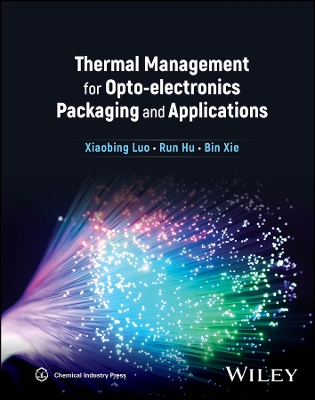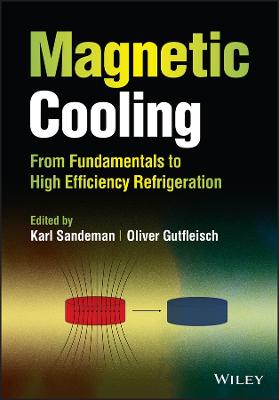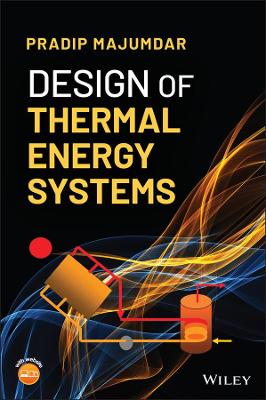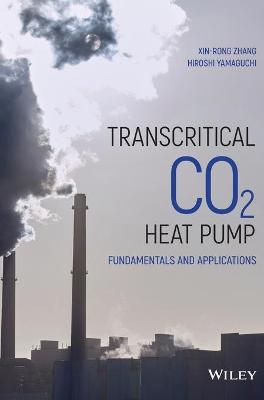Kern's Process Heat Transfer
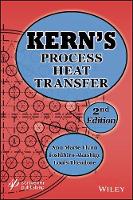 -15%
portes grátis
-15%
portes grátis
Kern's Process Heat Transfer
Theodore, Louis; Flynn, Ann Marie; Akashige, Toshihiro
John Wiley & Sons Inc
07/2019
726
Dura
Inglês
9781119363644
15 a 20 dias
1064
Descrição não disponível.
Table of Contents (First Edition) vii
Preface to the First Edition xiii
Preface to the Second Edition xv
Acknowledgement xix
Part I Fundamentals and Principles 1
1. Introduction to Process Heat Transfer 3
1.1 Units and Dimensional Analysis 4
1.2 Key Physical Properties 10
1.3 Key Process Variables and Concepts 14
1.4 Laws of Thermodynamics 22
1.5 Heat-related Theories and Transfer Mechanisms 26
1.6 Fluid Flow and Pressure Drop Calculations 28
1.7 Process Heat Transfer 35
Reference 40
2 Steady-State and Unsteady-State Heat Conduction 43
2.1 Flow of Heat through a Wall 46
2.2 Flow of Heat through a Composite Wall: Resistances in Series 50
2.3 Flow of Heat through a Pipe Wall 54
2.4 Microscopic Approach: Steady-State Conduction 63
2.5 Unsteady-State Heat Conduction 68
2.6 Microscopic Approach: Unsteady-State Conduction 71
Reference 77
3 Forced and Free Convection 79
3.1 Forced Convection Principles 82
3.2 Convective Resistances 87
3.3 Heat Transfer Coefficients: Quantitative Information 89
3.4 Convection Heat Transfer: Microscopic Approach 105
3.5 Free Convection Principles and Applications 108
3.6 Environmental Applications 120
Reference 126
4 Radiation 129
4.1 The Origin of Radiant Energy 132
4.2 The Distribution of Radiant Energy 133
4.3 Radiant Exchange Principles 138
4.4 Kirchoff 's Law 139
4.5 Emissivity Factors and Energy Interchange 145
4.6 View Factors 152
Reference 157
Part II - Heat Exchangers 159
5. The Heat Transfer Equation 161
5.1 Heat Exchanger Equipment Classification 162
5.2 Energy Relationships 163
5.3 The Log Mean Temperature Difference (LMTD) Driving Force 166
5.4 The Overall Heat Transfer Coefficient 183
5.5 The Heat Transfer Equation 208
Reference 216
6 Double Pipe Heat Exchangers 217
6.1 Equipment Description and Details 218
6.2 Key Describing Equations 225
6.3 Pressure Drop in Pipes and Pipe Annuli 244
6.4 Calculation of Exit Temperatures 251
6.5 Open-Ended Problems 254
6.6 Kern's Design Methodology 262
Reference 286
7 Shell and Tube Heat Exchangers 287
7.1 Equipment Description and Details 288
7.2 Key Describing Equations 305
7.3 Open-Ended Problems 331
7.4 Kern's Design Methodology 337
7.5 Other Design Procedures and Applications 348
7.6 Computer Aided Heat Exchanger Design 370
Reference 377
8 Finned heat Exchangers 379
8.1 Fin Details 380
8.2 Equipment Description 386
8.3 Key Describing Equations 388
8.4 Fin Effectiveness and Performance 396
8.5 Kern's Design Methodology 416
8.6 Other Fin Considerations 430
Reference 432
9 Other Heat Exchangers 433
9.1 Condensers 435
9.2 Evaporators 447
9.3 Boilers and Furnace 466
9.4 Waste Heat Boilers 476
9.5 Quenchers 484
9.6 Cogeneration/Combined Heat and Power 488
9.7 Cooling towers 494
9.8 Heat pipes 504
Reference 506
Part III - Peripheral Topics 509
10 Other Heat Transfer Considerations 511
10.1 Insulation and Refractory 512
10.2 Refrigeration and Cryogenics 529
10.3 Instrumentation and Controls 542
10.4 Batch and Unsteady-state Processes 551
10.5 Operation, Maintenance and Inspection (OM & I) 558
10.6 Economics and Finance 565
Reference 581
11. Entropy Considerations and Analysis 585
11.1 Qualitative Review of the Second Law 586
11.2 Describing Equations 587
11.3 The Heat Exchanger Dilemma 591
11.4 Application to a Heat Exchanger Network 599
Reference 602
Chapter 12 - Health and Safety Concerns 603
12.1 Definitions 607
12.2 Legislation 616
12.3 Material Safety Data Sheets (MSDSs) 619
12.4 Health Risk versus Hazard Risk 624
12.5 Health Risk Assessment 625
12.6 Hazard Risk Assessment 636
Reference 646
Appendix 649
AT.1 Conversion Constants 641
AT.2 Steam Tables 653
AT.3 Properties of Water (Saturated Liquid) 662
AT.4 Properties of Air at 1 atm 664
AT.5 Properties of Selected Liquids at 1 atm and 20 degreesC (68 degreesF) 665
AT.6 Properties of Selected Gases at 1 atm and 20. degreesC (68. degreesF) 667
AT.7 Dimensions, Capacities, and Weights of Standard Steel Pipes 669
AT.8 Dimensions of Heat Exchanger Tubes 671
AT.9 Tube-Sheet Layouts (Tube Counts) on a Square Pitch 673
AT.10 Tube-Sheet Layouts (Tube Counts) on a Triangular Pitch 675
AT.11 Approximate Design Overall Heat Transfer Coefficients (Btu/hr?ft2. degreesF) 678
AT.12 Approximate Design Fouling Coefficient Factors (hr?ft2. degreesF/Btu) 679
Figures
AF.1 Fanning Friction Factor (f) vs. Reynolds Number (Re) Plot 683
AF.2 Psychometric Chart: Low Temperatures: Barometric Pressure, 29.92 in. Hg. 684
AF.3 Psychometric Chart: High Temperatures: Barometric Pressure, 29.92 in. Hg. 685
Index 000
Preface to the First Edition xiii
Preface to the Second Edition xv
Acknowledgement xix
Part I Fundamentals and Principles 1
1. Introduction to Process Heat Transfer 3
1.1 Units and Dimensional Analysis 4
1.2 Key Physical Properties 10
1.3 Key Process Variables and Concepts 14
1.4 Laws of Thermodynamics 22
1.5 Heat-related Theories and Transfer Mechanisms 26
1.6 Fluid Flow and Pressure Drop Calculations 28
1.7 Process Heat Transfer 35
Reference 40
2 Steady-State and Unsteady-State Heat Conduction 43
2.1 Flow of Heat through a Wall 46
2.2 Flow of Heat through a Composite Wall: Resistances in Series 50
2.3 Flow of Heat through a Pipe Wall 54
2.4 Microscopic Approach: Steady-State Conduction 63
2.5 Unsteady-State Heat Conduction 68
2.6 Microscopic Approach: Unsteady-State Conduction 71
Reference 77
3 Forced and Free Convection 79
3.1 Forced Convection Principles 82
3.2 Convective Resistances 87
3.3 Heat Transfer Coefficients: Quantitative Information 89
3.4 Convection Heat Transfer: Microscopic Approach 105
3.5 Free Convection Principles and Applications 108
3.6 Environmental Applications 120
Reference 126
4 Radiation 129
4.1 The Origin of Radiant Energy 132
4.2 The Distribution of Radiant Energy 133
4.3 Radiant Exchange Principles 138
4.4 Kirchoff 's Law 139
4.5 Emissivity Factors and Energy Interchange 145
4.6 View Factors 152
Reference 157
Part II - Heat Exchangers 159
5. The Heat Transfer Equation 161
5.1 Heat Exchanger Equipment Classification 162
5.2 Energy Relationships 163
5.3 The Log Mean Temperature Difference (LMTD) Driving Force 166
5.4 The Overall Heat Transfer Coefficient 183
5.5 The Heat Transfer Equation 208
Reference 216
6 Double Pipe Heat Exchangers 217
6.1 Equipment Description and Details 218
6.2 Key Describing Equations 225
6.3 Pressure Drop in Pipes and Pipe Annuli 244
6.4 Calculation of Exit Temperatures 251
6.5 Open-Ended Problems 254
6.6 Kern's Design Methodology 262
Reference 286
7 Shell and Tube Heat Exchangers 287
7.1 Equipment Description and Details 288
7.2 Key Describing Equations 305
7.3 Open-Ended Problems 331
7.4 Kern's Design Methodology 337
7.5 Other Design Procedures and Applications 348
7.6 Computer Aided Heat Exchanger Design 370
Reference 377
8 Finned heat Exchangers 379
8.1 Fin Details 380
8.2 Equipment Description 386
8.3 Key Describing Equations 388
8.4 Fin Effectiveness and Performance 396
8.5 Kern's Design Methodology 416
8.6 Other Fin Considerations 430
Reference 432
9 Other Heat Exchangers 433
9.1 Condensers 435
9.2 Evaporators 447
9.3 Boilers and Furnace 466
9.4 Waste Heat Boilers 476
9.5 Quenchers 484
9.6 Cogeneration/Combined Heat and Power 488
9.7 Cooling towers 494
9.8 Heat pipes 504
Reference 506
Part III - Peripheral Topics 509
10 Other Heat Transfer Considerations 511
10.1 Insulation and Refractory 512
10.2 Refrigeration and Cryogenics 529
10.3 Instrumentation and Controls 542
10.4 Batch and Unsteady-state Processes 551
10.5 Operation, Maintenance and Inspection (OM & I) 558
10.6 Economics and Finance 565
Reference 581
11. Entropy Considerations and Analysis 585
11.1 Qualitative Review of the Second Law 586
11.2 Describing Equations 587
11.3 The Heat Exchanger Dilemma 591
11.4 Application to a Heat Exchanger Network 599
Reference 602
Chapter 12 - Health and Safety Concerns 603
12.1 Definitions 607
12.2 Legislation 616
12.3 Material Safety Data Sheets (MSDSs) 619
12.4 Health Risk versus Hazard Risk 624
12.5 Health Risk Assessment 625
12.6 Hazard Risk Assessment 636
Reference 646
Appendix 649
AT.1 Conversion Constants 641
AT.2 Steam Tables 653
AT.3 Properties of Water (Saturated Liquid) 662
AT.4 Properties of Air at 1 atm 664
AT.5 Properties of Selected Liquids at 1 atm and 20 degreesC (68 degreesF) 665
AT.6 Properties of Selected Gases at 1 atm and 20. degreesC (68. degreesF) 667
AT.7 Dimensions, Capacities, and Weights of Standard Steel Pipes 669
AT.8 Dimensions of Heat Exchanger Tubes 671
AT.9 Tube-Sheet Layouts (Tube Counts) on a Square Pitch 673
AT.10 Tube-Sheet Layouts (Tube Counts) on a Triangular Pitch 675
AT.11 Approximate Design Overall Heat Transfer Coefficients (Btu/hr?ft2. degreesF) 678
AT.12 Approximate Design Fouling Coefficient Factors (hr?ft2. degreesF/Btu) 679
Figures
AF.1 Fanning Friction Factor (f) vs. Reynolds Number (Re) Plot 683
AF.2 Psychometric Chart: Low Temperatures: Barometric Pressure, 29.92 in. Hg. 684
AF.3 Psychometric Chart: High Temperatures: Barometric Pressure, 29.92 in. Hg. 685
Index 000
Este título pertence ao(s) assunto(s) indicados(s). Para ver outros títulos clique no assunto desejado.
contents; table; edition; first; second; preface; vii; introduction; transfer; heat; properties; physical; laws; mechanisms; reference; steadystate; conduction; flow; wall; composite; series; wall resistances
Table of Contents (First Edition) vii
Preface to the First Edition xiii
Preface to the Second Edition xv
Acknowledgement xix
Part I Fundamentals and Principles 1
1. Introduction to Process Heat Transfer 3
1.1 Units and Dimensional Analysis 4
1.2 Key Physical Properties 10
1.3 Key Process Variables and Concepts 14
1.4 Laws of Thermodynamics 22
1.5 Heat-related Theories and Transfer Mechanisms 26
1.6 Fluid Flow and Pressure Drop Calculations 28
1.7 Process Heat Transfer 35
Reference 40
2 Steady-State and Unsteady-State Heat Conduction 43
2.1 Flow of Heat through a Wall 46
2.2 Flow of Heat through a Composite Wall: Resistances in Series 50
2.3 Flow of Heat through a Pipe Wall 54
2.4 Microscopic Approach: Steady-State Conduction 63
2.5 Unsteady-State Heat Conduction 68
2.6 Microscopic Approach: Unsteady-State Conduction 71
Reference 77
3 Forced and Free Convection 79
3.1 Forced Convection Principles 82
3.2 Convective Resistances 87
3.3 Heat Transfer Coefficients: Quantitative Information 89
3.4 Convection Heat Transfer: Microscopic Approach 105
3.5 Free Convection Principles and Applications 108
3.6 Environmental Applications 120
Reference 126
4 Radiation 129
4.1 The Origin of Radiant Energy 132
4.2 The Distribution of Radiant Energy 133
4.3 Radiant Exchange Principles 138
4.4 Kirchoff 's Law 139
4.5 Emissivity Factors and Energy Interchange 145
4.6 View Factors 152
Reference 157
Part II - Heat Exchangers 159
5. The Heat Transfer Equation 161
5.1 Heat Exchanger Equipment Classification 162
5.2 Energy Relationships 163
5.3 The Log Mean Temperature Difference (LMTD) Driving Force 166
5.4 The Overall Heat Transfer Coefficient 183
5.5 The Heat Transfer Equation 208
Reference 216
6 Double Pipe Heat Exchangers 217
6.1 Equipment Description and Details 218
6.2 Key Describing Equations 225
6.3 Pressure Drop in Pipes and Pipe Annuli 244
6.4 Calculation of Exit Temperatures 251
6.5 Open-Ended Problems 254
6.6 Kern's Design Methodology 262
Reference 286
7 Shell and Tube Heat Exchangers 287
7.1 Equipment Description and Details 288
7.2 Key Describing Equations 305
7.3 Open-Ended Problems 331
7.4 Kern's Design Methodology 337
7.5 Other Design Procedures and Applications 348
7.6 Computer Aided Heat Exchanger Design 370
Reference 377
8 Finned heat Exchangers 379
8.1 Fin Details 380
8.2 Equipment Description 386
8.3 Key Describing Equations 388
8.4 Fin Effectiveness and Performance 396
8.5 Kern's Design Methodology 416
8.6 Other Fin Considerations 430
Reference 432
9 Other Heat Exchangers 433
9.1 Condensers 435
9.2 Evaporators 447
9.3 Boilers and Furnace 466
9.4 Waste Heat Boilers 476
9.5 Quenchers 484
9.6 Cogeneration/Combined Heat and Power 488
9.7 Cooling towers 494
9.8 Heat pipes 504
Reference 506
Part III - Peripheral Topics 509
10 Other Heat Transfer Considerations 511
10.1 Insulation and Refractory 512
10.2 Refrigeration and Cryogenics 529
10.3 Instrumentation and Controls 542
10.4 Batch and Unsteady-state Processes 551
10.5 Operation, Maintenance and Inspection (OM & I) 558
10.6 Economics and Finance 565
Reference 581
11. Entropy Considerations and Analysis 585
11.1 Qualitative Review of the Second Law 586
11.2 Describing Equations 587
11.3 The Heat Exchanger Dilemma 591
11.4 Application to a Heat Exchanger Network 599
Reference 602
Chapter 12 - Health and Safety Concerns 603
12.1 Definitions 607
12.2 Legislation 616
12.3 Material Safety Data Sheets (MSDSs) 619
12.4 Health Risk versus Hazard Risk 624
12.5 Health Risk Assessment 625
12.6 Hazard Risk Assessment 636
Reference 646
Appendix 649
AT.1 Conversion Constants 641
AT.2 Steam Tables 653
AT.3 Properties of Water (Saturated Liquid) 662
AT.4 Properties of Air at 1 atm 664
AT.5 Properties of Selected Liquids at 1 atm and 20 degreesC (68 degreesF) 665
AT.6 Properties of Selected Gases at 1 atm and 20. degreesC (68. degreesF) 667
AT.7 Dimensions, Capacities, and Weights of Standard Steel Pipes 669
AT.8 Dimensions of Heat Exchanger Tubes 671
AT.9 Tube-Sheet Layouts (Tube Counts) on a Square Pitch 673
AT.10 Tube-Sheet Layouts (Tube Counts) on a Triangular Pitch 675
AT.11 Approximate Design Overall Heat Transfer Coefficients (Btu/hr?ft2. degreesF) 678
AT.12 Approximate Design Fouling Coefficient Factors (hr?ft2. degreesF/Btu) 679
Figures
AF.1 Fanning Friction Factor (f) vs. Reynolds Number (Re) Plot 683
AF.2 Psychometric Chart: Low Temperatures: Barometric Pressure, 29.92 in. Hg. 684
AF.3 Psychometric Chart: High Temperatures: Barometric Pressure, 29.92 in. Hg. 685
Index 000
Preface to the First Edition xiii
Preface to the Second Edition xv
Acknowledgement xix
Part I Fundamentals and Principles 1
1. Introduction to Process Heat Transfer 3
1.1 Units and Dimensional Analysis 4
1.2 Key Physical Properties 10
1.3 Key Process Variables and Concepts 14
1.4 Laws of Thermodynamics 22
1.5 Heat-related Theories and Transfer Mechanisms 26
1.6 Fluid Flow and Pressure Drop Calculations 28
1.7 Process Heat Transfer 35
Reference 40
2 Steady-State and Unsteady-State Heat Conduction 43
2.1 Flow of Heat through a Wall 46
2.2 Flow of Heat through a Composite Wall: Resistances in Series 50
2.3 Flow of Heat through a Pipe Wall 54
2.4 Microscopic Approach: Steady-State Conduction 63
2.5 Unsteady-State Heat Conduction 68
2.6 Microscopic Approach: Unsteady-State Conduction 71
Reference 77
3 Forced and Free Convection 79
3.1 Forced Convection Principles 82
3.2 Convective Resistances 87
3.3 Heat Transfer Coefficients: Quantitative Information 89
3.4 Convection Heat Transfer: Microscopic Approach 105
3.5 Free Convection Principles and Applications 108
3.6 Environmental Applications 120
Reference 126
4 Radiation 129
4.1 The Origin of Radiant Energy 132
4.2 The Distribution of Radiant Energy 133
4.3 Radiant Exchange Principles 138
4.4 Kirchoff 's Law 139
4.5 Emissivity Factors and Energy Interchange 145
4.6 View Factors 152
Reference 157
Part II - Heat Exchangers 159
5. The Heat Transfer Equation 161
5.1 Heat Exchanger Equipment Classification 162
5.2 Energy Relationships 163
5.3 The Log Mean Temperature Difference (LMTD) Driving Force 166
5.4 The Overall Heat Transfer Coefficient 183
5.5 The Heat Transfer Equation 208
Reference 216
6 Double Pipe Heat Exchangers 217
6.1 Equipment Description and Details 218
6.2 Key Describing Equations 225
6.3 Pressure Drop in Pipes and Pipe Annuli 244
6.4 Calculation of Exit Temperatures 251
6.5 Open-Ended Problems 254
6.6 Kern's Design Methodology 262
Reference 286
7 Shell and Tube Heat Exchangers 287
7.1 Equipment Description and Details 288
7.2 Key Describing Equations 305
7.3 Open-Ended Problems 331
7.4 Kern's Design Methodology 337
7.5 Other Design Procedures and Applications 348
7.6 Computer Aided Heat Exchanger Design 370
Reference 377
8 Finned heat Exchangers 379
8.1 Fin Details 380
8.2 Equipment Description 386
8.3 Key Describing Equations 388
8.4 Fin Effectiveness and Performance 396
8.5 Kern's Design Methodology 416
8.6 Other Fin Considerations 430
Reference 432
9 Other Heat Exchangers 433
9.1 Condensers 435
9.2 Evaporators 447
9.3 Boilers and Furnace 466
9.4 Waste Heat Boilers 476
9.5 Quenchers 484
9.6 Cogeneration/Combined Heat and Power 488
9.7 Cooling towers 494
9.8 Heat pipes 504
Reference 506
Part III - Peripheral Topics 509
10 Other Heat Transfer Considerations 511
10.1 Insulation and Refractory 512
10.2 Refrigeration and Cryogenics 529
10.3 Instrumentation and Controls 542
10.4 Batch and Unsteady-state Processes 551
10.5 Operation, Maintenance and Inspection (OM & I) 558
10.6 Economics and Finance 565
Reference 581
11. Entropy Considerations and Analysis 585
11.1 Qualitative Review of the Second Law 586
11.2 Describing Equations 587
11.3 The Heat Exchanger Dilemma 591
11.4 Application to a Heat Exchanger Network 599
Reference 602
Chapter 12 - Health and Safety Concerns 603
12.1 Definitions 607
12.2 Legislation 616
12.3 Material Safety Data Sheets (MSDSs) 619
12.4 Health Risk versus Hazard Risk 624
12.5 Health Risk Assessment 625
12.6 Hazard Risk Assessment 636
Reference 646
Appendix 649
AT.1 Conversion Constants 641
AT.2 Steam Tables 653
AT.3 Properties of Water (Saturated Liquid) 662
AT.4 Properties of Air at 1 atm 664
AT.5 Properties of Selected Liquids at 1 atm and 20 degreesC (68 degreesF) 665
AT.6 Properties of Selected Gases at 1 atm and 20. degreesC (68. degreesF) 667
AT.7 Dimensions, Capacities, and Weights of Standard Steel Pipes 669
AT.8 Dimensions of Heat Exchanger Tubes 671
AT.9 Tube-Sheet Layouts (Tube Counts) on a Square Pitch 673
AT.10 Tube-Sheet Layouts (Tube Counts) on a Triangular Pitch 675
AT.11 Approximate Design Overall Heat Transfer Coefficients (Btu/hr?ft2. degreesF) 678
AT.12 Approximate Design Fouling Coefficient Factors (hr?ft2. degreesF/Btu) 679
Figures
AF.1 Fanning Friction Factor (f) vs. Reynolds Number (Re) Plot 683
AF.2 Psychometric Chart: Low Temperatures: Barometric Pressure, 29.92 in. Hg. 684
AF.3 Psychometric Chart: High Temperatures: Barometric Pressure, 29.92 in. Hg. 685
Index 000
Este título pertence ao(s) assunto(s) indicados(s). Para ver outros títulos clique no assunto desejado.

